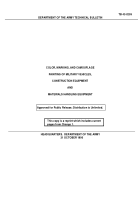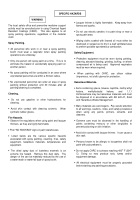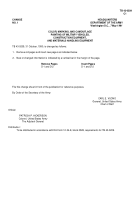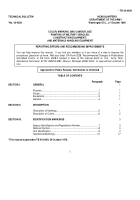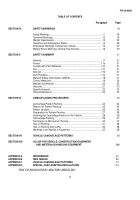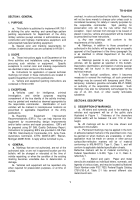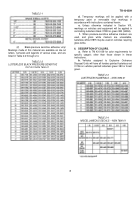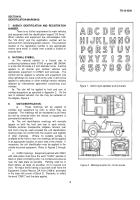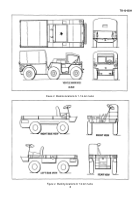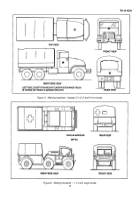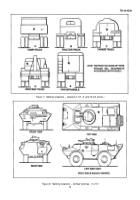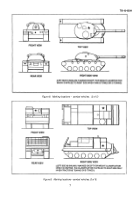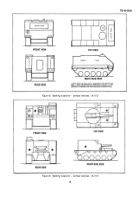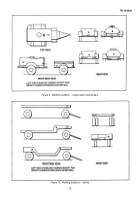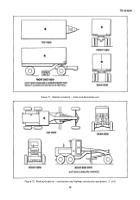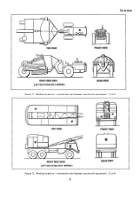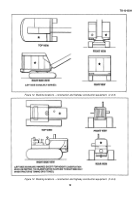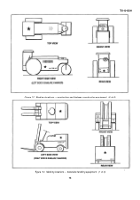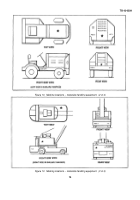TB-43-0209 - Page 2 of 406
SPECIFIC HAZARDS
WARNING
The local safety office and preventive medicine support
activity must be consulted prior to using Chemical Agent
Resistant Coatings (CARC).
This also applies to all
spray painting operations, regardless of the material
used.
Spray Painting.
•
All personnel who work in or near a spray painting
booth must wear a respirator when spray painting
operations are underway.
•
Only one person will spray paint at a time.
This is to
eliminate the hazard of accidentally spraying paint on
another person.
•
No spray painting will be conducted in an area where
unprotected personnel are within a 50-foot radius.
•
No unprotected personnel can enter an area of spray
painting without protection until 30 minutes after all
painting/cleaning is completed.
Cleaning.
•
Do not use gasoline or other hydrocarbons for
cleaning.
•
Avoid skin contact with cleaning solvents.
Wear
synthetic rubber gloves.
Fire Hazards.
•
Observe fire regulations when using paint and lacquer
thinners, as they are highly flammable
•
Post "NO SMOKING" signs in paint warehouses.
•
Listed below are the various specific hazards
associated with spray painting, cleaning, fires, safety
equipment, hazardous materials, temperatures and
equipment.
•
The dried spray dust of lusterless enamels is an
extreme fire hazard.
Remove this dust daily.
The
danger of fire can be materially reduced by the use of
a water-wash or water fall type of spray booth.
•
Lacquer thinner is highly flammable.
Keep away from
flames and sparks.
•
Do not use electric sanders in a paint shop or near a
spray paint area.
•
Wiping cloths soaked with linseed oil must either be
destroyed or spread out to dry in a well ventilated area
to prevent possible spontaneous combustion.
Safety Equipment.
•
Protective equipment must be worn during painting,
cleaning, abrasive blasting, grinding, buffing, or where
compressed air is being used.
Approved respirators
must be worn when required.
•
When painting with CARC, use silicon rubber
(impervious, not cloth) gloves for protection.
Hazardous Materials.
•
Items containing xylene, toluene, naphtha, methyl ethyl
ketone,
methylisobutyl
ketone,
and
1,1,1
trichloroethane may be hazardous materials and must
be disposed of in accordance with AR 420-47, Solid
and Hazardous Waste Management.
•
Many materials are carcinogens.
Pay careful attention
to all warnings, cautions, notes, and safety procedures
when using any paints, primers, solvents, and
cleaners.
•
Extreme care must be observed in the handling of
paints containing mercury or other fungicides to
prevent poisoning or skin irritation.
•
Avoid skin contact with lacquer thinner.
It can cause a
skin rash.
•
Persons known to be allergic to isocyanites shall not
paint with polyurethane’s.
•
Do not apply CARC to surfaces reaching 400
O
F (204
O
C). Doing so may produce toxic fumes and/or
equipment damage.
•
All electrical equipment must be properly grounded
before starting any painting procedures.
Back to Top

